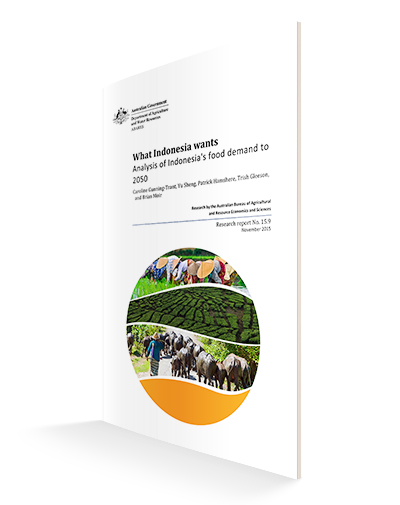Indonesia’s food demand to quadruple
AGRICULTURAL food consumption in Indonesia is projected to quadruple from today’s levels by 2050, according to the recently-released What Indonesia wants report by the Australian Bureau of Agricultural and Resource Economics and Sciences (ABARES).
ABARES executive director, Karen Schneider, said the rise was projected on the back of expected sustained economic growth, population increase and continued urbanisation. The Indonesia report from the latest in the What Asia wants series by ABARES provides great incentive for the Australian agribusiness sector. 
“Over the longer term, we expect per person incomes will increase significantly, leading to increased food consumption and more diverse diets in Indonesia,” Ms Schneider said.
“The projected rise in food consumption is characterised by expected higher intake of meat, dairy products, fruit and vegetables.”
Assuming no major policy changes to 2050, food imports are projected to be an increasingly important component of Indonesia's food supply in the coming decades.
“Indonesia has a strong agriculture industry, characterised by the production of both food and non-food cash crops, such as natural rubber, copra, palm kernels, coffee, cocoa and spices,” Ms Schneider said.
“Production of non-food cash crops in Indonesia has comparative advantage and this is expected to result in strong competition with local food production for resources.
“While the real value of Indonesia’s agrifood production is projected to more than double to US$173 billion in 2050 (based on 2009 US dollar values), food imports are expected to become an important part of Indonesia’s food supply.
“The real value of agrifood imports is projected to rise more than 20-fold from 2009, to US$152 billion in 2050 (in 2009 US dollars).
“In 2050, imports of beef are projected to reach US$26 billion, compared with US$500 million in 2009. Imports of dairy products are projected to be US$7 billion in 2050, compared with US$400 million in 2009.
“For fruit and vegetables, the value of imports is expected to increase by more than US$24 billion and US$10 billion, respectively, between 2009 and 2050.”
What Indonesia wants is part of the What Asia wants series, which analyses future food consumption and trade trends in Asian countries over the long term.
The report was discussed at the 19th Indonesia–Australia Working Group on Agriculture, Food and Forestry Cooperation in late 2015.
The other reports in this series are What Asia wants, What China wants and What India wants.
ends

 How to resolve AdBlock issue?
How to resolve AdBlock issue?